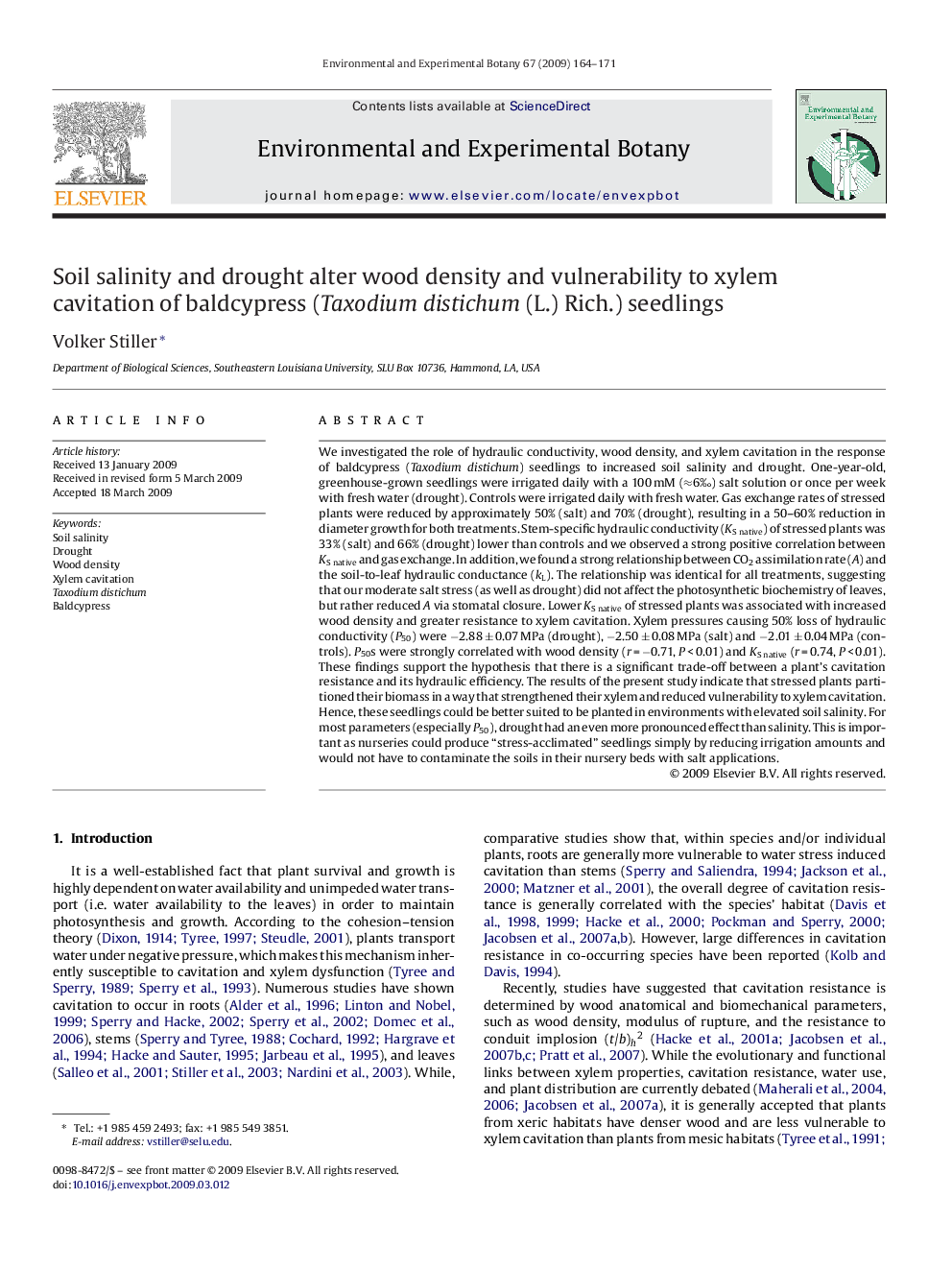| کد مقاله | کد نشریه | سال انتشار | مقاله انگلیسی | نسخه تمام متن |
|---|---|---|---|---|
| 4555047 | 1329241 | 2009 | 8 صفحه PDF | دانلود رایگان |

We investigated the role of hydraulic conductivity, wood density, and xylem cavitation in the response of baldcypress (Taxodium distichum) seedlings to increased soil salinity and drought. One-year-old, greenhouse-grown seedlings were irrigated daily with a 100 mM (≈6‰) salt solution or once per week with fresh water (drought). Controls were irrigated daily with fresh water. Gas exchange rates of stressed plants were reduced by approximately 50% (salt) and 70% (drought), resulting in a 50–60% reduction in diameter growth for both treatments. Stem-specific hydraulic conductivity (KS native) of stressed plants was 33% (salt) and 66% (drought) lower than controls and we observed a strong positive correlation between KS native and gas exchange. In addition, we found a strong relationship between CO2 assimilation rate (A) and the soil-to-leaf hydraulic conductance (kL). The relationship was identical for all treatments, suggesting that our moderate salt stress (as well as drought) did not affect the photosynthetic biochemistry of leaves, but rather reduced A via stomatal closure. Lower KS native of stressed plants was associated with increased wood density and greater resistance to xylem cavitation. Xylem pressures causing 50% loss of hydraulic conductivity (P50) were −2.88 ± 0.07 MPa (drought), −2.50 ± 0.08 MPa (salt) and −2.01 ± 0.04 MPa (controls). P50s were strongly correlated with wood density (r = −0.71, P < 0.01) and KS native (r = 0.74, P < 0.01). These findings support the hypothesis that there is a significant trade-off between a plant's cavitation resistance and its hydraulic efficiency. The results of the present study indicate that stressed plants partitioned their biomass in a way that strengthened their xylem and reduced vulnerability to xylem cavitation. Hence, these seedlings could be better suited to be planted in environments with elevated soil salinity. For most parameters (especially P50), drought had an even more pronounced effect than salinity. This is important as nurseries could produce “stress-acclimated” seedlings simply by reducing irrigation amounts and would not have to contaminate the soils in their nursery beds with salt applications.
Journal: Environmental and Experimental Botany - Volume 67, Issue 1, November 2009, Pages 164–171